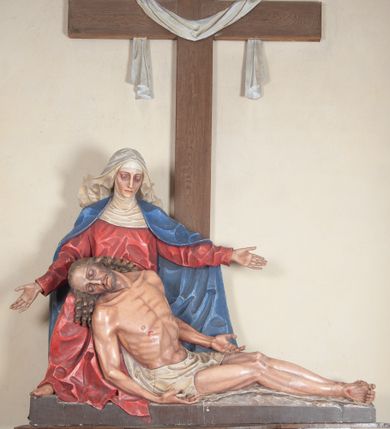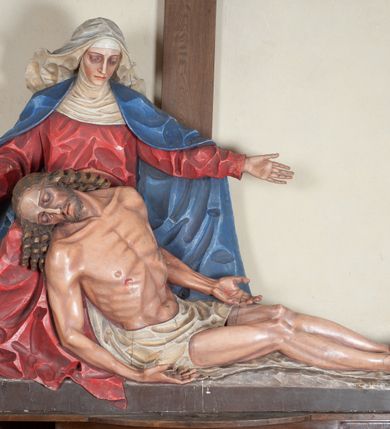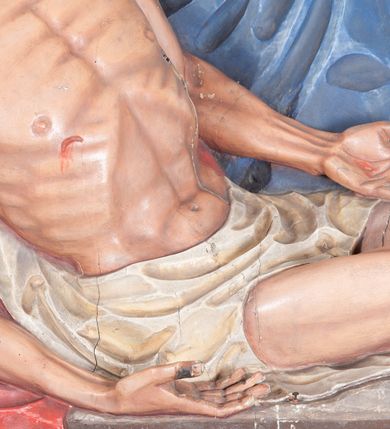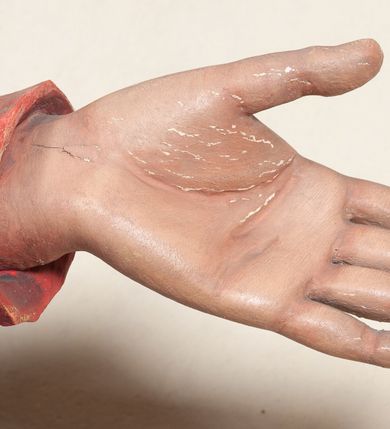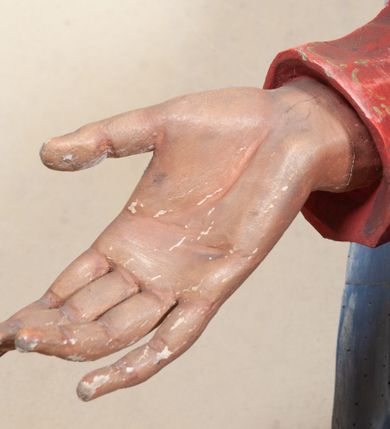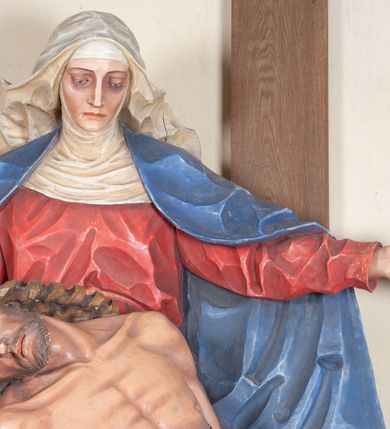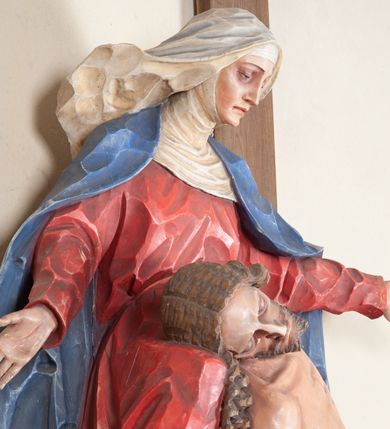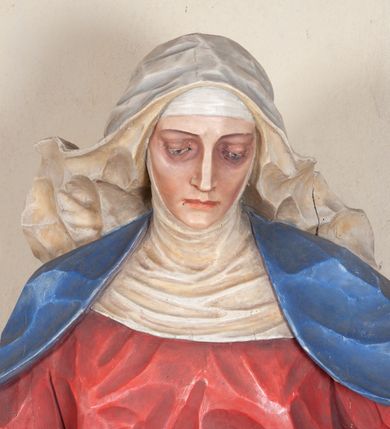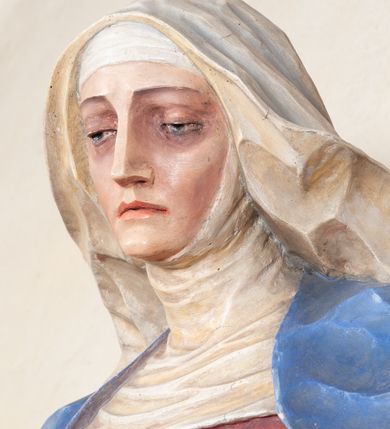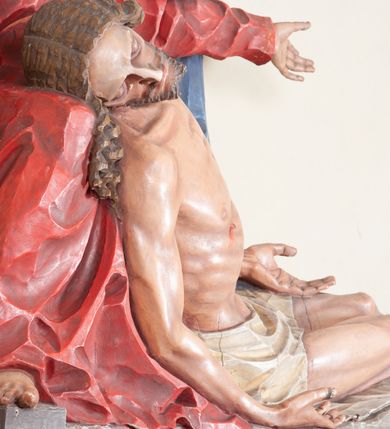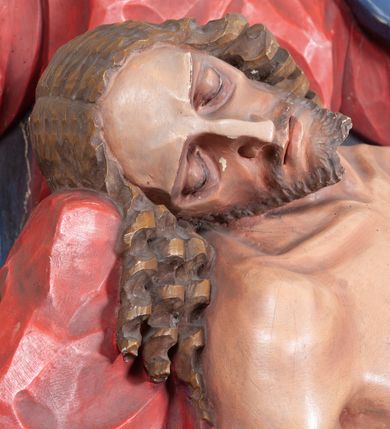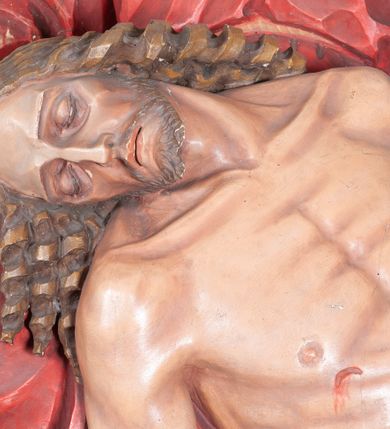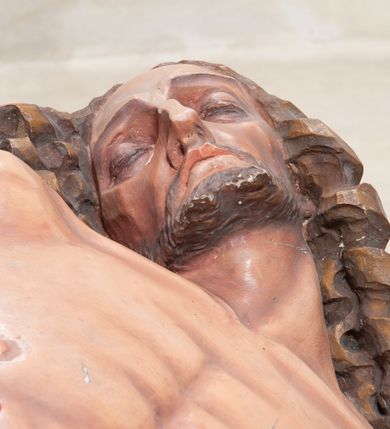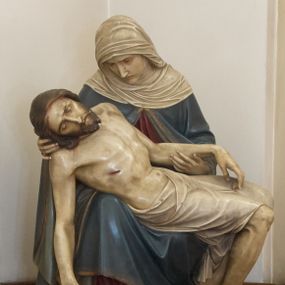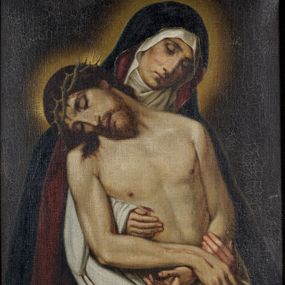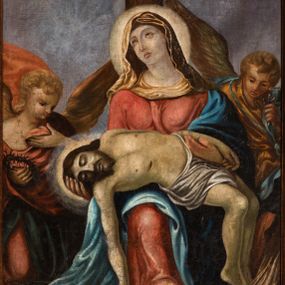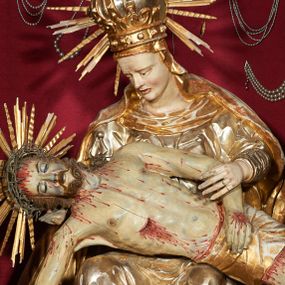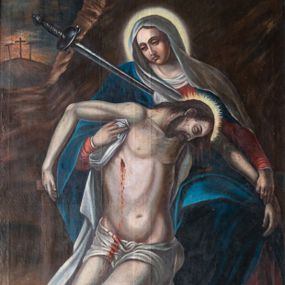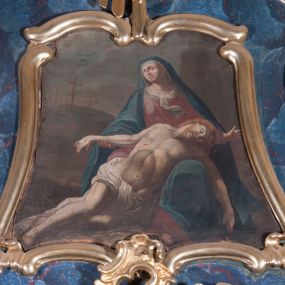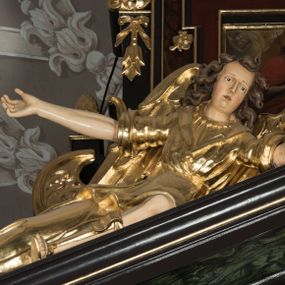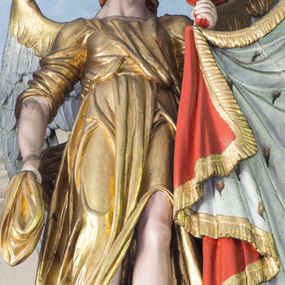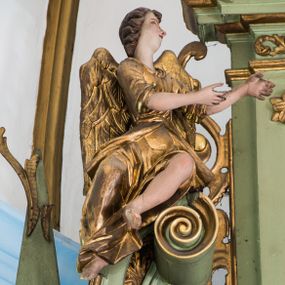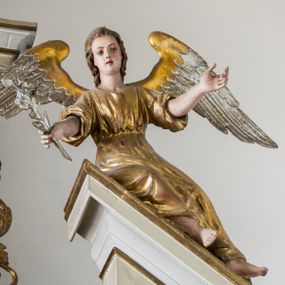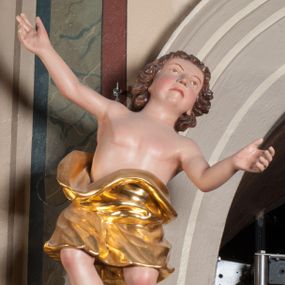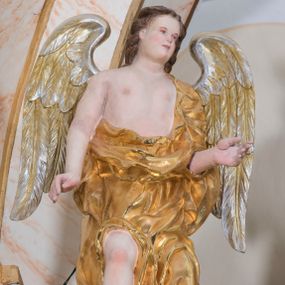
Pietà
Identifier
DZIELO/02083
Amount
1
Catalogue note author
Justyna Kuska
Abstract
The sculpture was made in the early 1940s by the Cracovian sculptor Wojciech Maciejowski. He ran his own sculpture workshop located at Mazowiecka Street in Cracow. For some time he also had an additional workshop at the Cracovian Convention of the Canons Regular of the Lateran, for whom he performed numerous orders in the Corpus Christi Church. It is most probably thanks to the canons that Maciejowski was sent to the church in Kamień, where the Cracovian convent member was the priest. In addition to the work in question, Maciejowski also made for the church in Kamień a sculpture of the Christ Crucified and a statue of Saint Thérèse of Lisieux. In 1941-1943, the sculptor was also to supervise the creation of confessionals and choir-stalls for the temple in Kamień. The sculpture in question illustrates the theme called "Pietà" in Christian iconography, i.e. the representational type in which Mary is holding the dead body of her Son on her lap. In this way, Mary's sacrifice and suffering has been depicted – by her acceptance of the incarnation she had already passed a death sentence on her Son. The representational type of Pietà was developed in the Middle Ages. There are several theories about its origin. The first derives it from the historical scene of Mourning, from which the other characters (St. John and Mary Magdalene) were excluded. Another one indicates that Pietà has its beginning in literary and mystical works expressing Mary's pain at Calvary. The third version finds the source of this representation in the images of Mary with the Baby on her lap.
Other works from this place
Similar works
By title
By category
How to cite?
Justyna Kuska, "Pietà", [in:] "The Sacred Lesser Poland Heritage", 2026, source: https://sdm.upjp2.edu.pl/en/works/pieta-7
